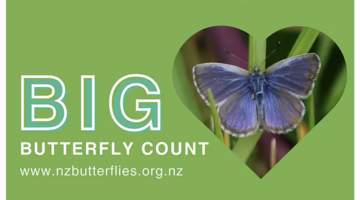

New Zealand’s most identifiable butterfly is the monarch (Danaus plexippus). Although found in many places around the world, the monarch is considered a New Zealand native because it became ...
READ MORE

Green-lipped mussels are endemic to New Zealand. They make their home on rocks and solid surfaces around New Zealand’s coastline. Mussel life cycle During its life cycle, the green-lipped mussel ...
READ MORE

Glow-worms are New Zealand’s underground stars. Small but bright, it is no wonder why they attract so many tourists to places such as Waitomo and Paparoa National Park. Living things often have a ...
READ MORE

In this activity, students collect and observe macroinvertebrates from a local freshwater stream. By the end of this activity, students should be able to: recognise that invertebrates are part of ...
READ MORE

Poetry with Fred the Thread – upper primary is a ready-to-use cross-curricular teaching resource. It uses a humorous poem read by author and scientist Dr Robert Hoare. Curriculum information This ...
READ MORE

Frogs for the future? is a ready-to-use cross curricular teaching resource. It uses the Ministry of Education’s 2019 Connected article Kimihia Kermit by Philippa Werry. Rights: Crown 2019 Frog ...
READ MORE

Marine Metre Squared is a New Zealand citizen science project that supports communities to monitor their local seashore. The project has been designed to provide meaningful, valid environmental ...
READ MORE

iNaturalist logs hundreds of thousands of photos of flora, fauna and fungi. There are even sound recordings too. Each is described and geo located. iNaturalist is used by citizens and scientists ...
READ MORE

This New Zealand-based citizen science project collects data about butterflies in our gardens, schools, parks and farms – any location in the country or on the outer islands. This annual event – ...
READ MORE

In this webinar, join Greta Dromgool as she introduces Tom Saunders and Chrissie Painting – two of Aotearoa New Zealand’s amazing entomologists. Delve into the fascinating world of insects and ...
READ MORE

To most of us, one earthworm resembles another. Although earthworms do have common characteristics, species differ widely in their size, skin colour and in the roles they play in the soil ...
READ MORE

Take advantage of children’s natural curiosity with the following resources. They require very little equipment – most of it should be in your kitchen or garden. Each topic has wrap-around ...
READ MORE
Like many marine animals, green-lipped mussels mate by broadcast spawning – the simultaneous release of eggs (from female mussels) and sperm (from male mussels) into the water. In this video ...
READ MORE
Mussels (including green-lipped mussels) are filter feeders – they process large volumes of the water they live in to obtain food. Filter feeding is a method of eating that is used by diverse ...
READ MORE
Although earthworms are classified as animals, their bodies are quite different to animals that live above the ground. This video highlights some of the interesting physical characteristics ...
READ MORE

The life cycle of the monarch butterfly. Click on one of titles to find out more about each stage. Select here to view the full transcript and copyright information.
READ MORE

This slideshow, from the webinar All about insects, provides additional support for the video tutorial. Use the Slideshow menu for further options, including view full screen, and go here for the ...
READ MORE

New Zealand’s common earthworms occupy different niches in the soil profile. To use this interactive, move your mouse or finger over any of the labelled boxes and select to obtain more ...
READ MORE